|
Do you want to go on a hut trip to the remote backcountry of British Columbia with your buddies? How about an expedition to ski from the summit of Denali? If so, you’ll need to be your own avalanche forecaster. And if that sounds like work, it’s because it is. But don’t let this scare you. With practice and persistence you can use avalanche forecasting techniques to make smart calls in the backcountry, even in foreign terrain.
Avalanche Forecasting is all about making educated opinions about what the likely avalanche hazards will be. This involves looking into the past to interpret a complex set of details (or lack thereof) and formulating an opinion on how future weather will affect the avalanche hazard. It’s a bit like a game of high stakes poker, and it’s an intimidating prospect to recreational backcountry travellers and industry professionals alike. Luckily, the dirty secret of avalanche forecasting (not decision-making in the field) is that you don’t have to be right… but you can’t be wrong. YOU DON’T HAVE TO BE RIGHT BUT YOU CAN’T BE WRONG?! Yup. Let us remember that high stakes game of poker and think about our decision making in bets. We can lose a few bets here and there and not lose the game, but if we go all-in we’d better be right… because the stakes are high. Our small bets are our snow-pit tests and test slopes. It’s ok to be wrong here. We actually learn from getting it wrong. What matters is how we look at that mistake and incorporate new information to form an updated opinion (or in this case a better avalanche forecast.) Like most things, this is better practiced in your home mountains before trying to forecast on your first big expedition. In order to start avalanche forecasting we need to learn a few basic principles regarding snow metamorphosis (how the structure of snow changes within a short time), snow mechanics (the forces and displacements of snow), and how changes in weather can affect these aspects. Recreational avalanche 1 and 2 classes will provide the best foundation for learning these skills. Find local avalanche education courses here. GETTING STARTED First things first – get a notebook and develop a routine. A write-in-the-rain notebook is the norm, but some folks are also using phones successfully. Whatever you choose, make sure you can use it in the worst of weather. Your notebook will serve as a reference tool for you both in the field and at home. Start a routine of recording this information before you leave home:
As a forecaster, I find it easiest to break this information down in terms of avalanche problems. These problems classify avalanches not only by type, but also by the weather pattern that forms them, their distribution in the terrain, the possible size, and what observations might be useful or alternatively unreliable. AVALANCHE PROBLEMS: NON- PERSISTENT Typically, non-persistent problems stabilise in hours to days. STORM SLAB Storm slabs are generally formed during storms with a warming trend. These are soft slabs. This problem can be elevation-dependent due to different snow amounts. Tests are generally reliable. It is commonly accompanied by a wind slab
WIND SLAB
Wind slabs are formed by wind compacting snow into a slab over weaker snow. These slabs can be soft and/or hard. Wind slabs can be formed in winds as light as 10mph, but wind averages of 25mph typically get my attention. This problem is aspect and elevation-dependent and can be formed on clear days with moderate wind. Tests are generally reliable.
DRY LOOSE
Dry loose avalanches are formed by cohesionless snow on the surface. Typically formed during storms with low winds and low-density new snow these point release avalanches are generally small but can be troublesome in more exposed terrain. This problem is generally elevation-dependent
AVALANCHE PROBLEMS: PERSISTENT
Typically, persistent problems stabilise in weeks to months. PERSISTENT SLAB Persistent slabs are formed when snow forms a slab over a persistent weak layer (PWL). The PWLs are typically formed in three places; at the base of the snowpack, around crusts, and on the surface during periods of high pressure. An understanding of snowpack metamorphosis that includes near-surface faceting processes, surface hoar formation, and faceting around crusts is crucial to understanding the distribution of these avalanches. Information on these subjects can be found by searching the ISSW library or in a local avalanche class. Tests are generally less reliable.
DEEP SLAB
Deep Slabs are persistent slabs’ big brother. As the name implies, Deep Slabs have a PWL buried at least 1m below the surface. Tests are generally not reliable. AVALANCHE PROBLEMS: WET Typically, wet problems stabilise with below-freezing temperatures. WET SLABS Wet slabs are the product of a loss of strength due to liquid water in the snowpack collecting in a particular layer a.k.a. “the funny business.” The funny business is usually an old PWL, and the liquid water can come from warming from the sun or air temperature, or a rain event. This problem is aspect, elevation, and time-dependent. Tests are generally less reliable. WET LOOSE Wet loose avalanches are the product of a loss of strength at the surface of the snow. This can be caused by warm temperatures, the sun, or rain. This problem is aspect, elevation, and time-dependent. PUTTING PEN TO PAPER As forecasters, our weather info gives us much of the information we use. Weather history can give us an idea of our current snowpack, and weather forecasts can help us predict conditions before going out skiing. SCENARIO If a storm came in with no winds and cold temperatures and finished near freezing the night before and you want to go skiing, what avalanche problem would you expect to find? If you’re having trouble, try reading through the list of avalanche problems again. Which one does this sound like? MORE DATA The answer to the last question is storm slab, but since we have simple data all we can issue is the simple forecast of, “there might be storm slab out there.” We still haven’t pinned down where in the terrain the potential problem lies, nor how big or how sensitive it might be. This is where more data will be useful…
Eventually, it’s time to take your avalanche forecasting skiing with you and test it. Use your observations from the day along with information from the avalanche center. Did you think this weather could produce natural avalanches? Are there any natural avalanches? How deep is that weak layer? How does that compare to your forecast? If your forecast was off, why? Is the weather station in a snowier or drier area compared to where you skied? Did the wind gauge get frozen and not report the wind? The more questions like this the more insight you can gain into information you might have missed or not given enough attention too. That said, be mindful of hindsight bias (knowing about an avalanche and thinking you would have been able to predict that avalanche). Keep track of your errors and adjust your forecast for the next day accordingly. This might not go so well for you at first. Keep at it. Seek mentorship and opinions from people with different avalanche backgrounds and don’t be afraid to reverse engineer your local avalanche forecast. As avalanche and weather conditions become more numerous and complex, an avalanche forecasting worksheet can help organise your thoughts. You can ask your local avalanche education organisation for these worksheets. However, some people use homemade spreadsheets or keep everything in a field notebook. Play the devil’s advocate while you’re out skiing: seek to disprove your forecast and then learn from it. Do your best to be objective with new information and be mindful to avoid confirmation bias. Remember that your forecast is just a guess. Observations (such as recent avalanches, cracking, whumping, and propagating ECTs) should take priority when making the decision to ski or not to ski in avalanche terrain. AVALANCHE FORECASTING AT YOUR OWN RISK! Avalanche forecasting can be a tricky, and backcountry skiing can pose dangerous conditions. Use this information cautiously and at your own risk. Be smart and stay safe out there! Obviously, coming home after a day in the mountains is always the top priority! “You ain’t gonna learn what you don’t want to know,” Bob Weir. By Aaron Diamond
1 Comment
The amount of consumer electronics carried by skiers and snowboarders on a daily basis has increased significantly in recent years. Smartphones, GoPros, cameras and GPS tracking devices all have their place, but when setting foot into the backcountry it’s the most important piece of electronics – the avalanche transceiver – that needs to do its job in order to keep you alive. All the other pieces of technology can cause avalanche transceiver interference affecting your beacon’s signal and search capability. This article goes into a bit more detail, but if you need a quick rule to follow, store your items at least 20cm away from your transceiver when transmitting and about 50cm when in search mode. Avalanche Transceiver Interference – Breaking it DownLet’s first take a look at how the transceiver works. When transmitting (“send” mode), each transceiver emits an electromagnetic pulse at the industry-regulated frequency of 457kHz. A transceiver in search mode receives that pulse and interprets it using the internal antennae, which is outputted to the searcher as a direction and distance. But the searching transceiver also picks up other signals that occur at the same frequency. These polluting signals are known as radio frequency noise. If there’s enough said noise in the 457kHz range, the interference can cause false signals and/or erratic readings on the searching transceiver’s display. The concept of radio frequency noise is much like the audible noise we encounter in a busy public space like a pub or bar. When you get there early before the crowds, you can have a conversation with a friend without the background noise posing a problem. Later on, however, the room is filled with other people around you talking and the music has probably gotten louder, hearing your friend across the table from you becomes all the more difficult. Active VS Passive InterferenceThere are two types of interference that can cause errors with a transceiver signal. Active interference comes from electronics that actively transmit frequencies such as phones, iPods, GPS devices, cameras, and headlamps, pretty much anything with a battery in it. It’s important to note here that Airplane Mode does not reduce the amount of radio frequency noise. The phone needs to be turned off and stored a sufficient distance away from the transceiver. Passive interference comes from sources that can partially block or warp the transceiver signal, usually in the form of metal or magnets. This includes but is not limited to shovel blades, aluminum foil, granola wrappers, magnets on the pockets of your jacket and your seasons pass with that Radio Frequency Identification (RFID) chip embedded inside. While these items don’t interfere as much as active or powered transmitters, it’s better to keep them inside your pack or the requisite distance from your transceiver. How to Reduce Avalanche Transceiver InterferenceThe best way to keep your transceiver doing its job properly is to keep all sources of active and passive interference as far from it as possible. That means storing your phone or camera in your pants pocket or pack, not in the chest pockets. Turn off all electronics completely that you’re not using, otherwise try to store it at least 20cm from the transceiver. If and when you do need to perform a search, remember to use the correct method and keep the transceiver outstretched from your body. If you suspect there’s interference and can’t quickly find the source, reduce your search strip widths to around 30 metres.
Want to know more about advanced avalanche search technique? Our ATL 2 course covers multiple-burial searches as part of its curriculum. For more technical analysis of transceiver interference, check out these industry blogs from Mammut and BCA By Vince Shuley I wanted to be prepared for the worst nature could throw at me. But the real threat turned out to be human. The party of eight set out to ski the southern slope of Microdot Peak, located in Alaska’s Hatcher Pass, on the morning of March 1, 2003. All were experienced skiers. Some had spent more than 100 days in the backcountry that winter. They were familiar with the properties and behavior of snowpack. They’d refined their safety assessment and prediction skills, sometimes through negative outcomes. A few had triggered and survived avalanches. One had witnessed an avalanche fatality. The southern slope of Microdot averages an angle of 35 degrees. Avalanches are most prevalent on slopes with angles of 30 to 45 degrees. When the skiers began their ascent, the sky was blue, and the winds were calm. The week before, four feet of snow fell on Hatcher Pass during a storm that, given the wind direction, covered Microdot’s southern slope with an additional burden of blown snow. Snow and wind create “slabs,” which in turn create weakness in the snowpack. When subjected to stress — like the stress that a skier, carving over the surface, might exert — rapid shape-shifting can occur. A slab can detach from the stable snowpack beneath it and career downhill like a runaway tectonic plate that transforms, within milliseconds, into a many-ton, half-frozen wave, subsuming whatever is in front of or on top of it, before instantaneously seizing, when it settles, into a substance resembling cement. Midway up the slope, the eight skiers paused to dig a pit in the snow. They discovered the existence of storm slabs and wind slabs, confirming the “considerable to high” avalanche danger determined by the local rangers. They continued their ascent. Solar radiation and rapidly increasing temperatures cause melting and weaken the snowpack’s top layer. Beautiful weather causes skiers to disregard warning signs, or take risks beyond their comfort zone. Once the skiers reached the summit of Microdot, they descended the southern slope one at a time. Four reached the bottom safely. The fifth triggered a slab avalanche that carried him 700 feet over a rock ledge, partly burying him and two others. My Level 1 avalanche course started early on the fifth day of 2019. So far there had been zero avalanche fatalities and one partial burial in the Eastern Sierra, the mountains visible through the windows of the storefront where we met. Ten men and three women, including me, sat in folding chairs around a C-shaped arrangement of collapsible tables. Because the temperature inside was around 55 degrees, most people wore hats and high-tech layers — some form-fitting and bright, others worn to a black sheen and multiply patched — and held travel coffee mugs between their hands. The room’s broody, slightly misanthropic mood fit the occasion: Over the next three days, we’d be learning how not to be buried alive.The instructor, an amiably intense man in his 30s named Ryan, asked us to introduce ourselves and answer the question, Why am I here? (“Why am I here?” we’d soon learn, is the question backcountry skiers must repeatedly ask themselves as they encounter new pitches with new conditions.) Most people lived on the West Coast and had summited famous peaks. A pair of men in their 20s were members of a locally itinerant rock-climbing community that truck-camped during the winter in a place called the Pit. People, on the whole, were here for two reasons: Half the room wanted to become less scared of avalanches; the other half wanted to become more. I was here for neither reason. I don’t often ski avalanche terrain. I don’t venture into areas unpatrolled by ski-resort crews that, in the middle of the night and after dawn, drop hand charges onto “loaded” slopes or shoot rounds from a 105-millimeter howitzer, forcing the mountain to shed its menace before people line up at the lifts. I pretended, when it was my turn, to be part of the “wanted to become less scared” group, because my real reasons weren’t reasons so much as prompts. But had I stated them, there were two. One: Because I had been an indiscriminately fearful child — and, despite repeated exposure to “considerable to high” dangers over many decades, that child failed to be eradicated and replaced by someone braver — the act of preparing for every type of unknown, even one I’m unlikely to encounter, began as a coping mechanism and evolved over the years into a passion. Preparing for hypothetical terrible events (a terrorist attack involving high-speed elevators in a Vegas hotel; the dismasting of a sailboat while rounding Cape Horn) provides a creative high to which I’ve become addicted. Acrobatic feats of problem-solving and projection make the future elongate and then bend back around the present. Time becomes spherical and exudes the deep glow of cogent busyness. Possibly as a result of — or as forecast by — this beloved hobby, I became a novelist; I’ve reconfigured this oft-pathologized “catastrophic/paranoid/neurotic” tendency as a peril of my trade. Out of professional necessity, I obsessively engage in outcome empathy. “Prepare for the worst,” the avalanche course manual advised, “and know what to do.” Two: Among the deaths I do not wish, being buried alive is the one I do not wish the most. Edgar Allan Poe published a story called “The Premature Burial” in 1844. (Poe most likely suffered from taphophobia — technically the fear of being mistaken for dead and then sealed in a coffin and buried in a grave — but I imagine he’d be equally inspired by the live-burial potential of avalanches.) After listing a number of horrors, including plagues, earthquakes and massacres, Poe’s narrator asserts: “To be buried while alive is, beyond question, the most terrific of these extremes which has ever fallen to the lot of mere mortality.” Learning how not to be buried alive, however, turned out to be a little bit boring. Ryan opened a snowpack PowerPoint while we took notes about storm slabs and wind slabs and persistent slabs, all of which sounded like subcategorical psychiatric disorders from the D.S.M. When Ryan shifted the conversation to “avalanche problems,” we perked up, maybe because the term would seem provocatively redundant, the avalanche itself being the primary problem. But no. Ninety percent of human-avalanche encounters, Ryan said, are triggered by humans, making humans the primary avalanche problem. Nature doesn’t kill people with avalanches. People kill people with avalanches. Then Ryan revealed a second twist: By entering the storefront two hours earlier, by taking an avalanche-safety course, we had statistically increased our chances of being killed in an avalanche. We were more likely to die now than we were at 8 a.m. The room absorbed this information. It felt like being in a movie in which you thought you were at a normal dinner party, but just by showing up, you’d implicitly agreed to fight the other guests to the death. The problem — the primary human problem — is that people are susceptible, prideful, bullheaded, egotistic, dumbstruck and lazy. Add to this doomed slurry a little avalanche training (or what used to qualify as avalanche training, and its focus on analyzing snowpack), and people make terrible decisions with greater frequency and confidence. I already knew about the human problem, because I did some of the recommended reading before class, including “Human Factor 2.0,” a seminal 2016 article about avalanche education published in Powder magazine and written by David Page (who also happens to be an ex-boyfriend from long ago). Page’s article tracks the shift in avalanche education away from snow-pit forensics and toward human forensics, a change in large part attributable to Ian McCammon, an engineer and avalanche researcher. McCammon dryly states the learning-death paradox in his 2004 paper “Heuristic Traps in Recreational Avalanche Accidents: Evidence and Implications”: “The blatancy of the hazard in avalanche accidents would be understandable if most victims had little understanding of avalanches. Unfortunately, this does not seem to be the case.” In class, Ryan identified McCammon’s six decision-making or “heuristic” traps. (Per McCammon: “Most of the time, the consistency heuristic is reliable, but it becomes a trap when our desire to be consistent overrules critical new information about an impending hazard.”) The traps that interested me most, because they were traps against which I was typically guarded — and so was happy to have them validated as specieswide frailties rather than personal quirks — were Familiarity (failing to remain vigilant when faced with the known), Social Facilitation (everybody’s doing it, so it must be O.K.) and Expert Halo (the experts must know what they’re doing, and so it’s safe to unquestioningly follow them). The others are Consistency (or “commitment” — every moment you don’t turn around for home, it becomes harder to do so), Scarcity (powder fever) and Acceptance (peer pressure). The broad solution, Ryan said, to avoiding all heuristic traps is group decision-making, constant communication and the regular practice of emotional vulnerability. McCammon’s findings, and Ryan’s curiously detached and uneasy way of talking about emotional vulnerability, confirmed my working theory: The curriculum of preparedness, no matter the cataclysm, isn’t only about the concrete knowledge and skills a person must acquire to survive. Often these curriculums make legible human contradiction and weakness. We broke for lunch. When we returned and sat in our seats and waited for Ryan to emerge from the back office, I looked around and did some math. Seventy percent of our student body fell into the demographic that, according to Ryan, was most likely to die in an avalanche: male, late 20s, intermediate-to-expert experience level, some formal avalanche training. A man at the end of the table asked the class if anyone had seen the 2014 movie “Force Majeure.” I was the only person who had. Another man asked what the movie was about. I didn’t say it was about the ongoing shame and denial experienced by a husband who abandoned his wife and children during an avalanche scare. I didn’t say, “Much like this course so far, it’s a referendum on masculinity.” All-female groups, Ryan told us before lunch, make better decisions in risky situations than all-male groups or mixed-gender groups. When asked why women became less smart in the company of men, Ryan speculated that “women, around men, feel uncomfortable speaking up.” I did not say, and not because I was uncomfortable speaking up, that in my experience as a midlevel skier who had more than once been taken up slopes I could not descend — for example, a deep-powdered backcountry slope under which lurked many cliffs, that two male friends, insanely enough (in retrospect), insisted I could ski — I do and did speak up, often repeatedly. I was just never heard. The wilderness-death or near-death “case study” is a literary genre unto itself. Not unlike an Austen novel — in which, among other things, readers of the time could learn, via the characters’ calculations and miscalculations, how to navigate the treacherous early-19th-century social terrain — the wilderness case study allows readers to learn from others’ (sometimes mortal) mistakes. The American Avalanche Association, based in Bozeman, Mont., publishes semiregular compendiums of human-avalanche encounters called The Snowy Torrents. I own the second and the latest issues (subtitled, in turn, “Avalanche Accidents in the United States, 1967-1971” and “Avalanche Accidents in the United States, 1996-2004”). While written for educational purposes, the case studies don’t lack for narrative flair. “Sally Chambers had just picked herself up from a fall when she heard someone say, ‘Oh, no!’ She turned around just in time to see a wall of snow descending upon her.” The methodology is both causal and objectively speculative. The analysis breaks into five sections: weather conditions, accident summary, rescue, avalanche data, comments. Ryan might have used a synopsis of “Force Majeure” as an in-class case study, because shame and denial inhibit the reporting of human-triggered avalanches, which subsequently reinforces a culture of silence and impedes the sharing and disseminating of instructive stories in which the main characters do not choose wisely. Instead, during the second half of class, Ryan distributed a case-study synopsis about a party of experienced skiers on Microdot. (He didn’t use a case study from the latest Snowy Torrents, intuiting, perhaps, that many in our course had already scrutinized it cover to cover.) We divided into smaller groups to discuss what “stood out” in terms of the party’s preparation, safety, teamwork. The incident was notable less for the body count (zero) and more for how, even though several members of the eight-person party had previously triggered avalanches and even, in one case, witnessed a fatality, they had ignored the many obvious dangers, suggesting that these skiers had become dazzled by their own expertise, falsely brightened by luck. The case study didn’t include — as the case studies in The Snowy Torrents don’t include — the psychological factors that led these skiers to continue when the signs against it were so compelling. Here’s where my skill set came in handy. Here’s why all avalanche courses should include at least one novelist. In my head, I imagined the real “avalanche problems” on Microdot. Skier 1, an avalanche survivor, hadn’t slept well for weeks because his business, which he hadn’t run scrupulously, was being audited by the I.R.S. Skier 2, a past witness to an avalanche fatality, was dating Skier 3, who had recently expressed doubts about their long-term compatibility prospects, and so Skier 2, though worried by the ranger report, said nothing when Skier 3 insisted they keep climbing. Skier 4, a tech executive, learned over the years that she could gain the respect of her male co-workers by behaving in a cavalier manner, and so, wanting the same respect and acceptance from her male skiing friends, she employed this strategy on mountains too. Skier 5 wanted to appear “committed to the plan” to Skier 6, creator of a successful series of life-coaching videos for aspiring C.E.O.s, and for whom Skier 5, an unemployed filmmaker, hoped to work. Skier 7, also an avalanche survivor, had lost his father, a Libertarian, to bone cancer in January, and his father’s final admonition was, “never cave to the mediocrity of groupthink,” which Skier 7 took to mean that caution equals cowardice. The sun was temptingly warm. The sky was temptingly blue. A wolverine crossed their path. Skier 8, a folklore scholar, said that wolverines, in Finland, signaled safe travel. We’d never know, of course. But Ryan encouraged us to be empathetic, because empathy helps us learn, and judgment does not (the Microdot case study warns, “This story underscores the fact that all humans are capable of making poor decisions”), which I believe to be superficially true, though it strikes me as a conclusion drawn from data sourced from the Bible, not actual data. Regardless, we didn’t judge, if only because we were going into the mountains for the next two days and, based on whatever biblical or superstitious story math we did in our heads, we didn’t want to curse our outcomes. As we packed up our notebooks and travel mugs, however, I wondered why these case studies were called accidents. To call these deaths and burials accidents implicitly perpetuated the idea that the randomness of nature was the killer, not the shortsightedness, cowardice or hubris of people. It acquitted the subject and the object of the action: “Damage was done.” In the interests of vulnerability, growth, shame-reduction and clear communication, The Snowy Torrents might revise their subtitle: Timeless United States Avalanche Mistakes. Bad winter weather in the Sierra is nothing like bad winter weather in the Northeast, where I’m from. Snow falls so quickly in the Sierra that you can barely keep up while shoveling it. If you’ve never seen snow like this — and I hadn’t, not until I moved to California in my 20s — you might realize, upon first experiencing it, that you never understood why the Donner party couldn’t just walk out of the mountains when winter hit. As always, before starting the course, I enthusiastically prepared for the worst. Preparing for the worst, when you’re not on an avalanche course, can earn you the label “catastrophist.” To some, ceaselessly scanning a plain day for big and little dooms is a highly optional and neurotic activity. David Page, who lives in the nearby mountains and who met me for dinner the night before the course began, told me that he prefers to call otherwise-pathologized attentiveness “heightened situational awareness.” I preferred this term, too. Because I knew how quickly the weather in the Sierra could turn, I reserved a four-wheel-drive car weeks in advance. Right before my flight, I called the rental agency to confirm that my car would have four-wheel-drive. When I arrived, and was given the keys to a vehicle, I checked with the lot attendant before putting my bags in the trunk: Does this car have four-wheel-drive? He said he didn’t think it did. I returned to the desk. The clerk apologized for the error. On my way back to the lot, the same attendant said, “Oh, you’ll be really happy, that’s a good four-wheel-drive car.” Avoiding the Expert Halo Trap is my most innate gift. I never let somebody, or a fleet of somebodys, reassure me that a persistent and inexplicable irregularity should be ignored, just because they say it should. I suspected my car didn’t have four-wheel-drive soon after I left the rental lot. But I was late to meet a friend for a drink (Consistency Trap), and as I’d already pointedly asked two people at the rental agency, I was too embarrassed to return and ask them, are you really, really sure (Acceptance Trap). Because it was more convenient and less awkward to do so, I let it go. But now, looking at the weather report, I re-engaged my skepticism. (Though my hotel would receive no more than a dusting over the next day, in the mountains — a distance of only 42 miles — it would snow five feet.) I was desperate to conserve my analytical resources for the mountain, but I didn’t want to commit the confirmation-bias error we learned about the day before. When testing snow, Ryan said, you should never look for proof of stability. With stability the goal, you’re testing for permission to do what you want to do. Instead, you should test the snow for proof of instability. You should look and look and look until you find it. The first, second, and third looks online suggested the rental car had four-wheel-drive. I kept searching for instability. I finally found it. Because my two-wheel-drive car wouldn’t make it past the chain patrol, stationed on the highway midway between the valley and the mountains, I caught a ride with a 20-something man from Los Angeles. He was giving a ride to another 20-something man. I asked them personal questions from the back seat, because we were supposed to be vulnerable with one another and practice our communication skills, but all conversational paths quickly led us back to the day’s sobering avalanche advisory. “Bottom line: considerable avalanche danger will exist throughout the day.” At 8 a.m. we met Ryan and a second instructor, Mike, at a trailhead and performed a gear check. One student — a trauma medic who had amputated the black, dead fingers and toes of avalanche survivors, and who confessed to being claustrophobic — took me aside. The avalanche report, he said, really concerned him. Most accidents happen when the avalanche danger is “considerable.” (There are five danger ratings: low, moderate, considerable, high and extreme.) Oddly, when the avalanche danger is “high,” fewer people are killed, because people on high-danger days are certain about their uncertainty. “Considerable” danger, on the other hand, requires that people deal with their uncertainty about their uncertainty; on a “bluebird day” with clear sky and fresh powder, the two uncertainties can conveniently cancel each other out. The survivor of a 2013 avalanche in the Yukon, when asked about her group’s decision-making process, said: “For me, the word ‘considerable’ was not dangerous. I don’t know why. You just ‘consider’ it.” At this particular moment, however, I was less scared of avalanches and more worried about a pop quiz. Obviously we were being tested about the six heuristics! We should we speak up and veto the trip! Nobody said anything. Instead we huddled in a low-wattage sun patch near the parking lot and resisted the wind that noisily whipped the snow around, making it impossible to hear Ryan and Mike’s lecture about avalanche beacons. We practiced strapping the beacons like a gun in a chest holster under our jackets. We practiced turning them from “transmit” to “receive” mode, which, because the dial was finicky, required that we remove our gloves. Every second of skin exposure registered to the brain as a stupid and optional risk, and so we learned firsthand how skiers commonly commit the puzzling oversight of wearing an avalanche beacon yet failing to turn it on. Then we practiced finding fake buried people on a low-angle slope. Mike hid a plywood board and a beacon two feet below the surface. He yelled, “Avalanche!” and we switched our beacons to “receive mode.” We held our beacons to the snow like metal detectors, but because we were mildly freaking out, the straightforward (in class) “grid method” failed to ruler the slope into manageable patches of unknowability. Before digging, we tried to locate the “body” with our probe, but poking down through the snow — soft, hard, soft, hard — it was impossible to tell plywood from depth hoar, a layer of crunchy, large-grained snow. “In a real situation,” Mike reassured us, “you’ll feel a squish.” We paused to talk about what was happening, somewhere beneath our feet, to our pretend friend or pretend partner or pretend child. Unless a victim is with others, and those others brought shovels and probes, which give them 10 minutes to dig the victim out (after which the chance of survival declines by 80 percent), the victim probably wants death to happen as quickly as possible. The victim does not want to be one of the unlucky 2 percent who die of hypothermia over the course of hours, rather than of trauma instantly (25 percent of deaths) or of asphyxiation within roughly 15 to 45 minutes (75 percent of deaths). Unless the victim is buried at the surface (unlikely, as the average depth of burial in the United States is almost four feet), the chance of escaping, without help, is basically nil. The snow, as it slides, heats up and becomes wetter. When it stops, it freezes instantly. If a victim is caught inside the churn when this happens, they’re effectively sealed inside an ice coffin. Instead of fighting, a victim could take a tip from the survivor of the Yukon avalanche: “I tried just to relax a little bit,” she said in “Rescue at Cherry Bowl,” a video posted on Avalanche Canada as part of its online education. “I was actually O.K. with dying — I was happy with the life I lived.” But how to learn any of these skills via actual experience when the stakes are so high? A climbing friend — he camped, for a while, in the Pit — once complained to me about the hypocrisy of the mountaineer’s version of The Snowy Torrents, called Accidents in North American Climbing, and what he identified as its “moralizing” tone. One case study, for example, cited “exceeding abilities” as a reason for a climber’s death. “How are you supposed to learn if you don’t push yourself?” my friend asked. “The people writing these reports have been doing that their entire lives.” It was a conundrum. In many nonavalanche-terrain scenarios, if a person falls into a heuristic trap, the outcome isn’t death. Most people, on a daily basis, engage in what Mike called “kind learning.” Kind learning allows a person to make mistakes. “Wicked learning” does not. (An avalanche course, assuming no mistakes are made along the way, is kind learning about wicked learning.) A kind learner, for example, because she had written a novel, could believe that she understood how books were written (Familiarity Trap) and so, enthused by a new project, obsessively storm ahead for years (Consistency Trap), and refuse, because of the shame involved, to reassess when doubt threatened (Acceptance Trap) before realizing the excursion was ill fated. Time is killed, and a bit of ego, but nobody tends to perish while learning how to better write a book, or build a boat, or smoke a brisket. Because my life wasn’t typically on the line, I’d become an enthusiastic, mistakes-based learner. I tried to make mistakes. I learned best by messing up, sometimes badly, even expensively, but never mortally. I could figure out what went wrong and better prepare the next time, even if that preparation included “make more mistakes” as one of the necessary steps. The snow and wind intensified, the sky dimming to near-dusk levels. By 1 p.m., the day felt over. Yet we still had to dig a pit. One to two feet of snow had fallen since we had arrived. The lee slopes were loaded. Nonetheless, we lined up behind Mike and snowshoed or skinned to just below 9,000 feet. (“Skinning” — the act of ascending a mountain on skis — refers to the removable, sticky strips of nylon and mohair, stretched and affixed to the skis’ underside to prevent backsliding, called “skins,” because they were originally made from animal hides.) Forty-mile-per-hour gusts knocked us around. Nobody seemed particularly happy, not even a guy who climbed Mount St. Helens earlier that winter. He looked dazed and hypothermic. Mike’s mustache froze. We dropped our packs on a 23-degree angle slope (seven degrees below the optimal avalanche angle) and started to dig. If a person tried to create, in material form, a pause, it would look like a snow pit. Its negative space is square, and only after Mike shaved the walls to perfect 90-degree angles did it start to look like a mass grave that could easily fit us all. Mike scuffed the wall with a plastic card, and we listened to the sound of round snow versus faceted snow. (The sound of snow is crucial. A sign that an invisible weak layer has collapsed beneath you, meaning the layer on which you are skiing is no longer attached to the mountain, is an audible whumpf.) We punched the snow. Then with four fingers we pushed. Then with one finger. We noted the resistance variation between the layers. Then I stopped paying attention. I watched the spumes of snow spiraling upward from the nearest peak. A giant shard of marble and granite loomed a thousand feet above us, looking like the prow of an ocean liner emerging from the fog. We could have been weathering the sea during a hurricane or blinded by a sandstorm in a frigid desert. The material substance of our isolation — frozen water, saltwater, sand — ceased to matter, save how it dictated our survival strategy, and thus our thinking, if we could actually think and refuse to be hypnotized, as I was, by the sumptuous terror and beauty. I sat on the floor of the snow pit, where it was 10 degrees warmer. Because I was either dying or about to die of hypothermia, I found myself falling into a Nostalgia Trap — not yet coined by McCammon, but a human factor nonetheless — wherein a person is tempted by the bluebird days of the past, and the sense of loss she feels for the person she might have been, had she been, from the start, a different person. Snow pits are no longer the primary focus of avalanche-training courses, in part because human beings are the more erratic variable but also because of a phenomenon called “spatial variability,” meaning that a snow pit provides information only about itself and says nothing about the stability a person might find in a different snow pit, dug two feet away in any direction. Snow pits are self-reliant loners. But snow pits are useful because they insert, into a day where Scarcity Traps abound, a moment of reflection. You can stop and listen and touch and appreciate that you are fully alive, but depending on your choices, by the end of the day, you might not be. For the third and final class, I hitched a ride again with my two 20-something friends. We’d gone out to dinner the night before and by now were pretty chummy. Neither of them, however, was interested in the game I proposed over tacos: Which of our two instructors, Ryan or Mike, was more likely to die someday in an avalanche? The 20-somethings found death speculation macabre. I countered that analyzing “experts” was essential practice. We’d be in situations, in the future, in which we’d have to psychologically sum people up, deciding which ones to trust with our lives. We met Ryan and Mike in the atrium of a failing mall. We sat on a pair of abandoned couches around an abandoned coffee table and read the online daily avalanche advisory, which predicted “avalanche problems” that would produce slides both “very large” and “likely.” “Bottom line: high avalanche danger exists this morning where 1-2ft of new snow fell overnight accompanied by the most extreme sw winds of the season.” We unfolded our maps to plan our day, but the danger was so prevalent that there was practically nowhere safe to go. Ryan said that we’d be fine if we stuck to the few low-angle slopes. We’d need to constantly assess and reassess the conditions as we ascended, however, and “relentlessly think about the consequences.” We’d need to regularly ask ourselves whenever we encountered a new pitch: Why am I here? The claustrophobic E.R. doctor who yesterday was scared of dying was eager to get outside, despite the advisory’s being drastically worse. One day of survival, and he had either learned what he had come here to learn — how to safely, and without being pointlessly terrified, travel through avalanche terrain — or he’d experienced the first of many instances of another human frailty we’d learned about, called “normalization of deviance.” I felt a snag of dread but talked myself out of it. (I was traveling with Mike, who I had decided was less likely to die in an avalanche than Ryan.) I was being neurotic, not highly situationally aware. Mike and Ryan were both certified. They had both skied this terrain hundreds of times. I considered ways in which a heuristic trap could actually help in a situation like this, how a trap could promote prudence and sagacity. Because of the Acceptance Trap — the desire not to be seen as a fool by others — neither Ryan nor Mike would want to kill his students on an avalanche survival course. We divided into two groups. I didn’t have a lot of experience on backcountry skis, and confessed as much to Mike. I offered to snowshoe, but Mike reassured me that I’d be fine on skis, and besides, everyone else was on skis (two men had “splitboards” — a snowboard that splits in half to create two skis for climbing); he also implied that on snowshoes, I would be unhappy and slow, and I would hinder where the group could go. I told him again — because I didn’t want to recreate past experiences in which, despite my detailed and increasingly exaggerated descriptions of my inabilities, a man took me up a mountain I could not, without risking injury or a total loss of affection for him, get down — that I was essentially a beginner. Mike again reassured me: I’d be fine.
We attached our skins and followed a gradual incline along a ridge. It was a bluebird day for sure. Warm, sunny, an abundance of new powder. Along the way, Mike quizzed us. We found a vertical crack in the snow layers on a low-angle slope. Mike said, “What do I think about this slope?” I said, “That you should not go over it.” He said, “Well, I’m about to.” We hung out at the top of a dome and then headed back down and then again up. We kept among the trees to reduce our risk of becoming buried in a slide starting above us (trees can act like the teeth of a comb, thinning an avalanche into weaker rivulets). We took turns cutting track through many-feet-deep snow. At one point, the claustrophobic E.R. doctor disappeared to his waist in a wind hole. Just after lunch we found what, in some respects, we’d traveled to see: an avalanche. Mike estimated it to be eight hours old. We stood 25 feet downhill from the toe (the edge of the debris field) and discussed the conditions that created the slide, like the slope’s angle. I asked Mike why none of us were scared. I definitely wasn’t. The absence of fear was a peculiar sensation, akin to coolly scrutinizing my own amputated hand. He said that the slab had already slid, and that if there were to be another, which there wouldn’t be — based on the wind direction, the slope hadn’t reloaded — it wouldn’t reach us; also, he was familiar with this area, and knew we weren’t in any danger. Still, we were breaking a few rules. We had stopped directly in the avalanche’s “run-out” path. We were relying on familiarity as an indicator of safety. In neither case did I think Mike made a poor decision. But our avalanche autopsy left me wondering: When is a trap a trap, and when is it wisdom? As we continued to ascend steeper and steeper terrain, I started to get nervous. Skinning up mountains requires endurance. Getting down them requires skill. We climbed all the way to the base of the formerly storm-enveloped granite-and-marble shard, its crags and facets now sharply highlighted by the sun. We detached our skins and flipped our bindings so that our uphill skis became downhill ones. The two splitboarders connected their two halves to make a single plank. Mike warned, as we paused at the top of the slope, “these are gnarly conditions.” The snow, after hours of absorbing solar radiation, had thickened to what one student referred to as “elephant snot.” A two-foot layer of sticky, dense snow lay atop a few more feet of loose, grainy hoar. Unless we moved quickly over the surface, our skis would punch through the top layer, which would then trap us up to our thighs. Our turns had to be fast and tight, near the trees, because it wasn’t safe to carve more widely into the open. Mike was right. It was gnarly. Half the students, myself obviously included, wiped out over and over again. The scene was deemed by another student “a yard sale.” The pair on splitboards abandoned verticality and instead rode their splitboards through the trees like sleds. And then, what we planned in the failing mall would happen, did: We survived. We sat between the twin ruts of a Sno-Cat trail and debriefed. Had we planned well, or were we just lucky? Mike asked if we would have done anything differently. We said we wouldn’t have. He said, contemplatively, “I might have better taken into account people’s skill levels.” Then we dispersed. I returned my skis at the rental store and met a local friend at her house, an A-frame with a giant triangular window, beyond which 6 feet of wind-sculpted snow obscured what, in spring, became a porch. Now snow wasn’t a substance I could trigger and so kill myself. Now it was a refrigerator for our beer. My friend and I drank and laughed. I hadn’t done any laughing over the last three days, while my classmates and I pretended our loved ones were asphyxiating beneath our skis. At around 8 p.m., one of the 20-somethings texted me a newspaper article posted that afternoon. The headline read: “Colorado’s first avalanche death of 2019 came during an advanced avalanche-safety course on Red Mountain Pass.” I clicked on the article. Earlier that day, six avalanche students were caught in the slide they had triggered. Five lived. The avalanche danger was considerable-to-high. No further analysis was available. On the first day of class, Ryan made it clear that we were not eliminating risk — we were “managing” it. If we wanted not to die in an avalanche, that goal was easily accomplished. “The simplest way to mitigate avalanche hazard,” the course’s manual advised, “is to avoid avalanche terrain altogether.” But “risk” to some is “just another day” to others. Risk, in the backcountry, is an occupational hazard, no different from the risk assumed by astronauts or explorers, save that backcountry skiing, for most practitioners, isn’t a career; their risk-taking isn’t considered noble or newsworthy (unless they die doing it), and it has no greater ambition save to make a single person happy. When people are together, their individual risk thresholds become destabilized, and some assume a degree of risk that, alone, they never would. But there is never no risk. Death is statistical, not eradicable. When I was pregnant, I was told my chance of having a child with Down syndrome was 1 in 400. My father-in-law, a mathematician, called my risk “functional zero.” Functional zero is zero, but — to the imagination, at least — it is also not zero, just like the fear of being buried alive is both 100 percent irrational and also not. Within those narrow gaps (between irrational and rational, functional zero and zero), creative ingenuity — not just neuroses — can thrive. The pursuit of joy, even if that joy begins as fear and takes the form of preparation against an irrational outcome, is a death wish, maybe. Or it’s a life wish. Or there’s no difference. Texture, at a minimum, better distinguishes days spent this way, and that texture becomes the record of the idiosyncrasies of an individual’s mind. Were it not for the irrational fear of being buried alive, George Washington wouldn’t have requested his corpse be kept on his deathbed for three days, or Schopenhauer on his for five. Poe wouldn’t have written “The Premature Burial,” not to mention “Berenice,” “The Fall of the House of Usher,” “The Cask of Amontillado” and “The Black Cat.” John G. Krichbaum, in 1882, wouldn’t have invented his Device Indicating Life in Buried Persons, which involved a coffin fitted with a pipe extending to the surface, and Albert Fearnaught (truly, his name) wouldn’t have invented a “grave signal” in which a rope around a buried person’s wrist, if tugged, released a flag above the plot. Alfred Nobel wouldn’t have written a will that stipulated, first, that his money be used to create an eponymous prize, and ultimately that his veins be opened and drained, after which he would be cremated. No one would have founded or joined the London Association for the Prevention of Premature Burial. I wouldn’t have taken a course to learn to survive a danger I would rarely encounter. I stepped into the drift to grab another beer. The wind had picked up. A clump of snow shook loose from a tree bough and barely missed my head. Had anyone in my class died that day, I wondered whose deaths would have been seen as the most pointless by outsiders, and thus the most harshly judged. Probably mine. I was the only person with no actual business being there. “This story underscores the fact that all humans are capable of making poor decisions.” But I hoped that if I had been buried and, if luck were on my side, asphyxiated within minutes, people who knew me would understand: By learning to do something I didn’t love, I was doing what I loved. I slid the porch door shut. The snow against the glass gave me a cross-sectional view of its layers. The house was a snow pit, but a warmer one, with booze. From my apartment windows back home, I’d learned to read pedestrians, and their outfits, as a way to gauge the weather. Here I read the snow. It was buried time. The layers told me what had happened since the winter began. Events like storms, and cold nights followed by warm days, were stabilized in material form, until a person, crossing the surface, released them. By Heidi Julavits |
AuthorWe gather articles from around the globe. Archives
January 2024
Categories |
Location |
|

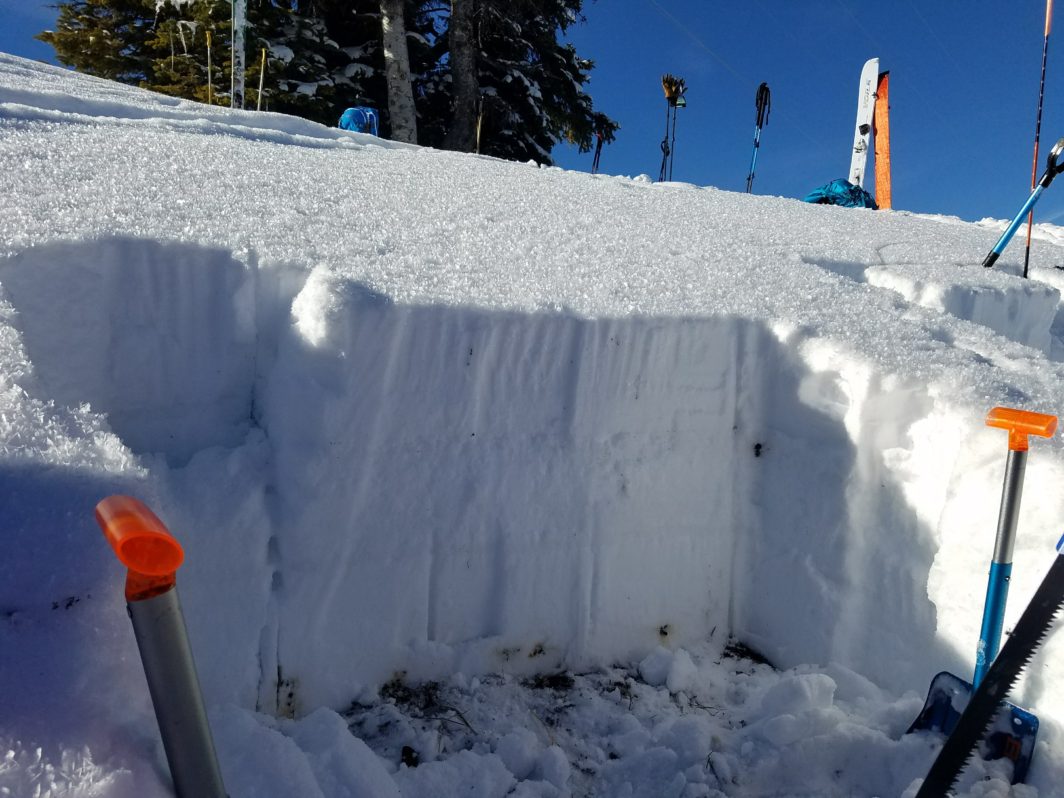
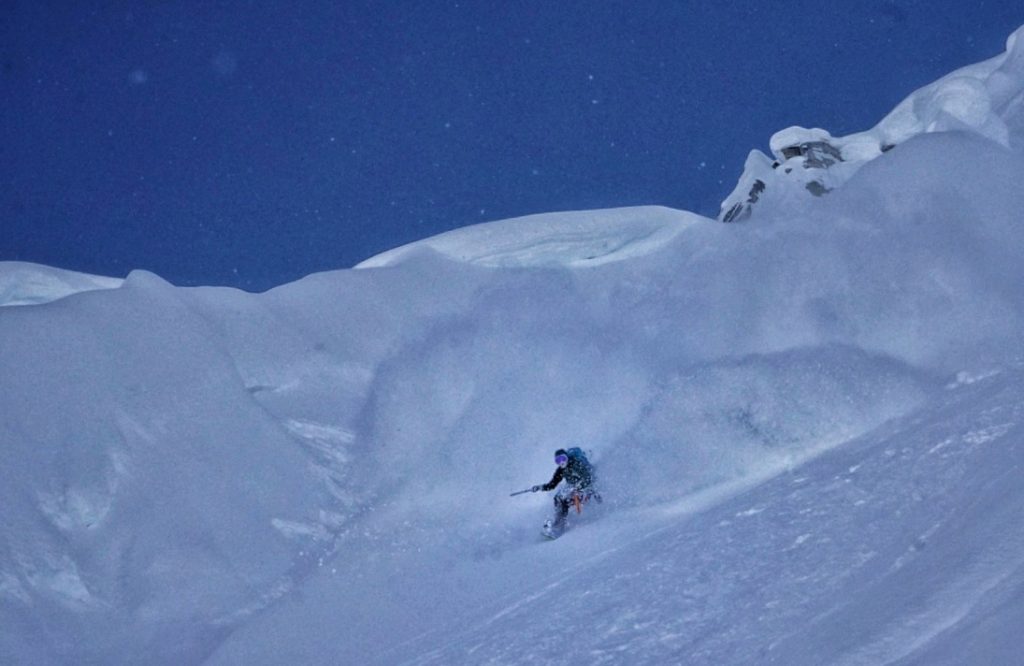
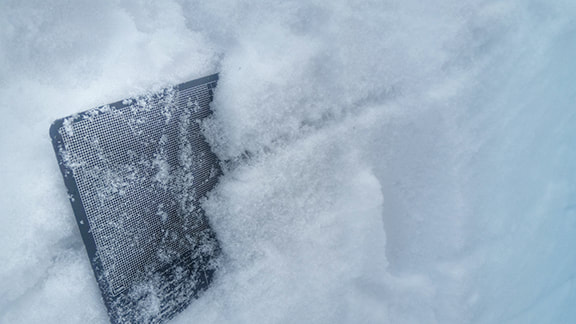
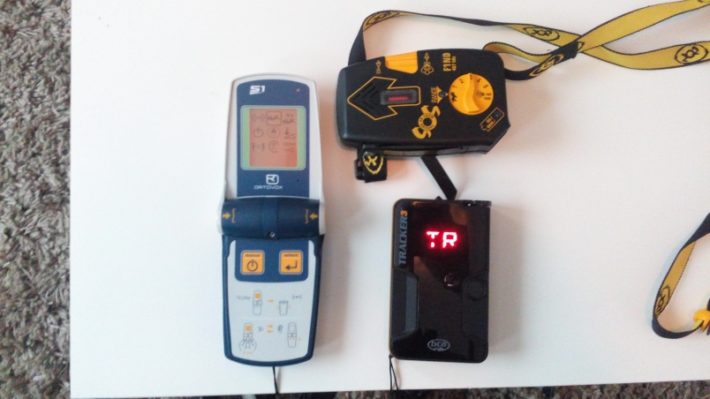
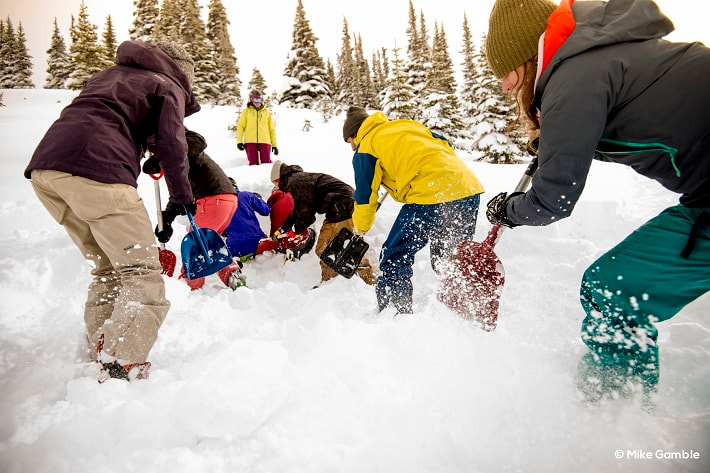
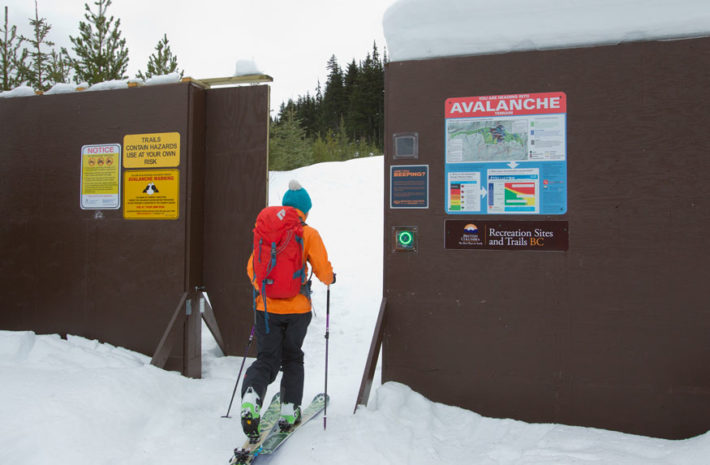
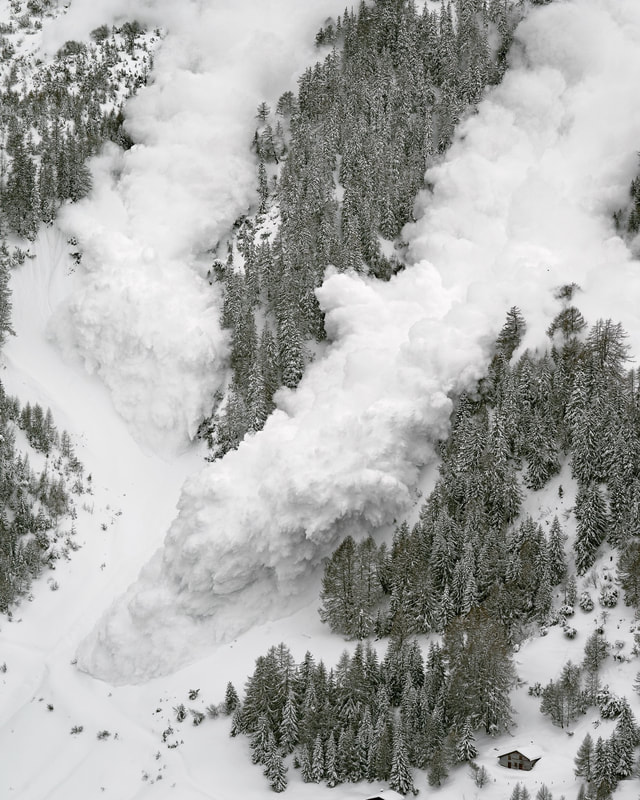
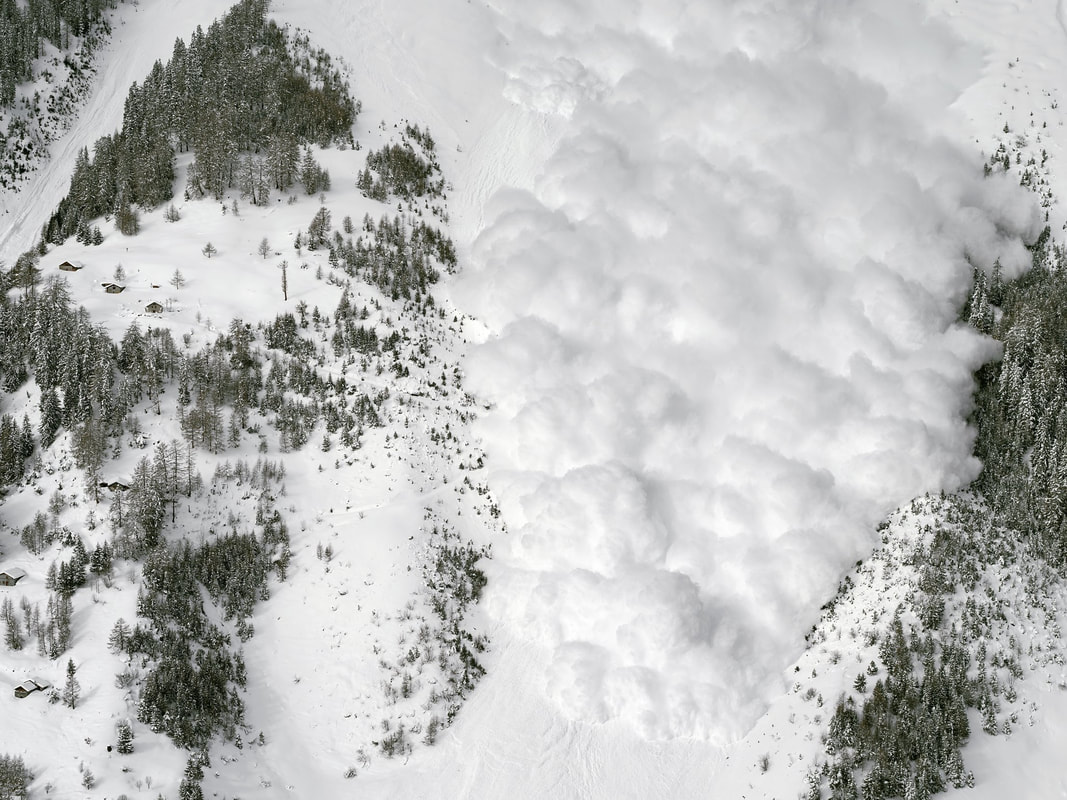
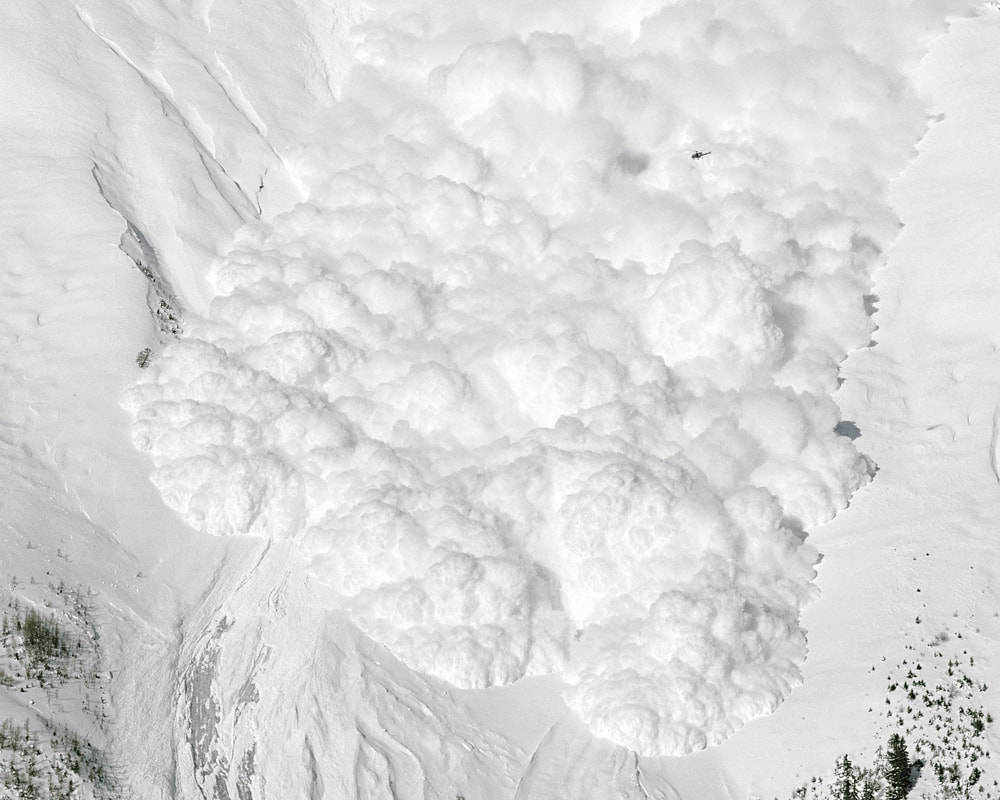
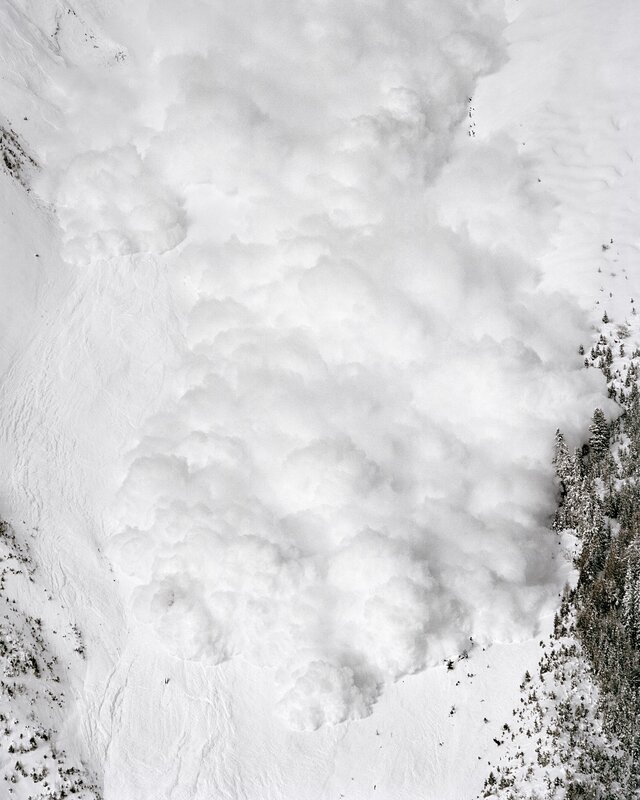
 RSS Feed
RSS Feed